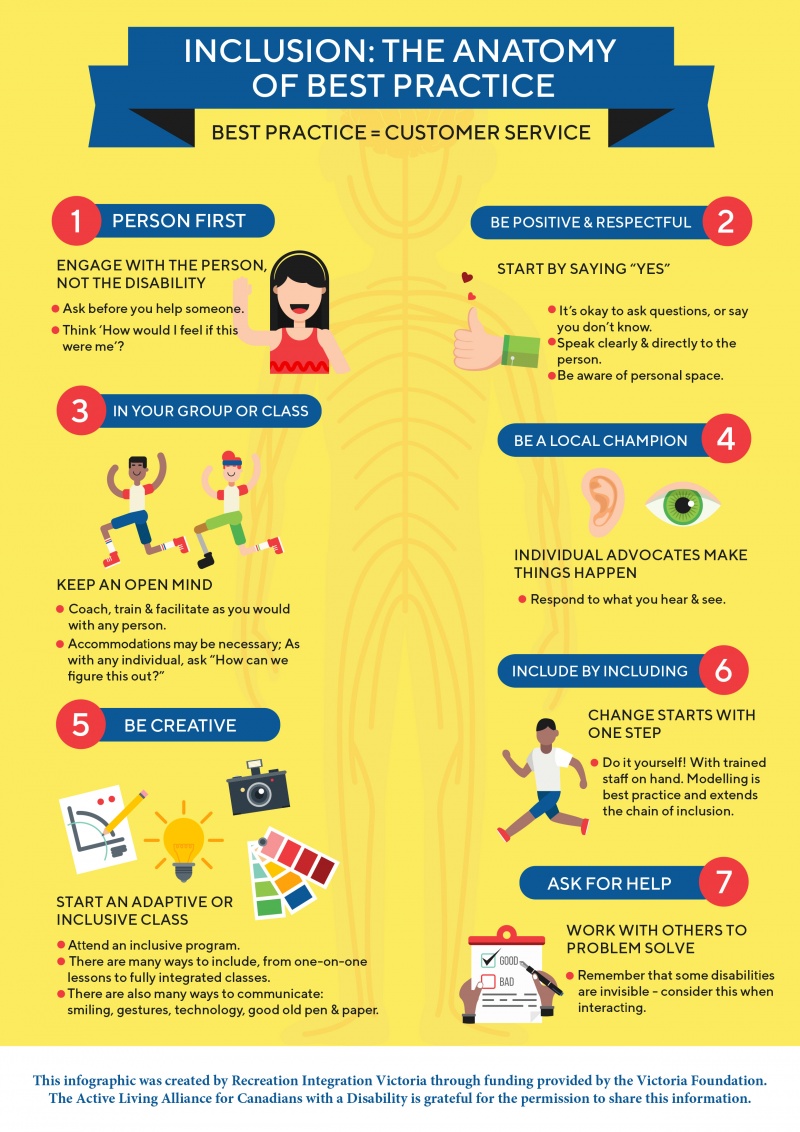INCLUSION: THE ANATOMY OF BEST PRACTICE
Text version
BEST PRACTICE = CUSTOMER SERVICE
1. PERSON FIRST
ENGAGE WITH THE PERSON, NOT THE DISABILITY
Ask before you help someone. Think ‘How would I feel if this were me’?
2. BE POSITIVE & RESPECTFUL
START BY SAYING “YES”
It’s okay to ask questions, or say you don’t know.
Speak clearly & directly to the person.
Be aware of personal space.
3. IN YOUR GROUP OR CLASS
KEEP AN OPEN MIND
Coach, train & facilitate as you would with any person.
Accommodations may be necessary; As with any individual, ask “How can we figure this out?”
4. BE A LOCAL CHAMPION
INDIVIDUAL ADVOCATES MAKE THINGS HAPPEN
Respond to what you hear & see.
5. BE CREATIVE
START AN ADAPTIVE OR INCLUSIVE CLASS
Attend an inclusive program.
There are many ways to include, from one-on-one lessons to fully integrated classes.
There are also many ways to communicate: smiling, gestures, technology, good old pen & paper.
6. INCLUDE BY INCLUDING
CHANGE STARTS WITH ONE STEP
Do it yourself! With trained staff on hand. Modelling is best practice and extends the chain of inclusion.
7. ASK FOR HELP
WORK WITH OTHERS TO PROBLEM SOLVE
Remember that some disabilities are invisible - consider this when interacting.
This infographic was created by Recreation Integration Victoria through funding provided by the Victoria Foundation. The Active Living Alliance for Canadians with a Disability is grateful for the permission to share this information.





